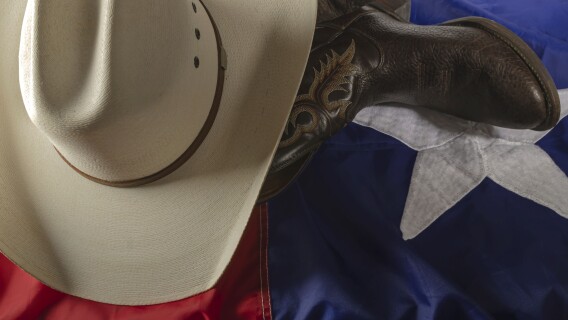As a former market maker from the Chicago Board of Options Exchange (CBOE) I have a bit of gamble in me, and I’m willing to take risk when I think the time is right. I’m not talking about betting on a sports game where I have no edge or at a craps table in Las Vegas. However, when I do think I have an edge in the stock market I’m not afraid to execute a “Texas Hedge,” which is a SUPER bullish position.
First a bit of folklore on where the expression Texas Hedge supposedly came from:
The earliest known reference comes from James Gilbert, a former TransMarket Group floor clerk, who relayed the following to Traders Magazine in 2006: “I was a runner at the time. And I see this guy signal to buy 500 futures. Big futures. And I know he just bought calls. So I yell - hey, you are backwards on your hedge! And he looks me square in the face with these eyes of cobalt, not an ounce of joviality in his veins. He says ‘Boy - I’m from Texas. We don’t hedge when we’re right in Texas. We double down, son.’ The whole pit must’ve heard him, because from that moment on, any time any trader mistakenly hedged backwards, they would say ‘I TEXASED’ and the whole trading crowd would point and laugh. Everybody but Bill, from Texas. He would just stare, with those piercing cobalt eyes.”
[text_ad]
While that is a cute story, that is not the first known reference to the expression Texas Hedge. I can tell you that Texas Hedge was absolutely a term that was frequently used when I started on the CBOE trading floor in 1999.
And even before I arrived on the trading scene, it was a commonly used term in livestock trading when cattle ranchers might buy cattle futures contracts while already owning cattle, thereby doubling their risk exposure.
So how might I execute a Texas Hedge if I had high conviction in a trade?
As an options trader, I would buy the stock AND buy call options on that stock.
A Texas Hedge
For example, if I thought the odds favored fictional stock XYZ, which is trading at 100, going much higher, I could make this trade:
Buy XYZ stock
And
Buy XYZ September 100 strike calls
These are two bullish positions that would work should XYZ stock move meaningfully higher.
However, as you might imagine there is a ton of downside risk to this strategy.
If XYZ stock were to fall, I would lose money on my stock position, and my calls would expire worthless. Bad and worse!
Another way the expression Texas Hedge is used and can go very poorly is when an individual works for a company, and at the same time owns lots of stock in that company via purchases, or stock awards/options.
We saw that scenario go very poorly for many people who used to work at Enron or Lehman Brothers decades ago, as those folks lost their jobs when those companies went out of business and also saw their big stock positions go to zero. Truly an awful scenario.
Stepping back to the more positive side of the coin, I will say the Texas Hedge is not for the faint of heart. However, if you think the odds are meaningfully in your favor, and if you understand what you can lose if you are wrong, every once in a while, this bold strategy is a recipe for a monster profit.
[author_ad]
*This post has been updated from a previously published version.

